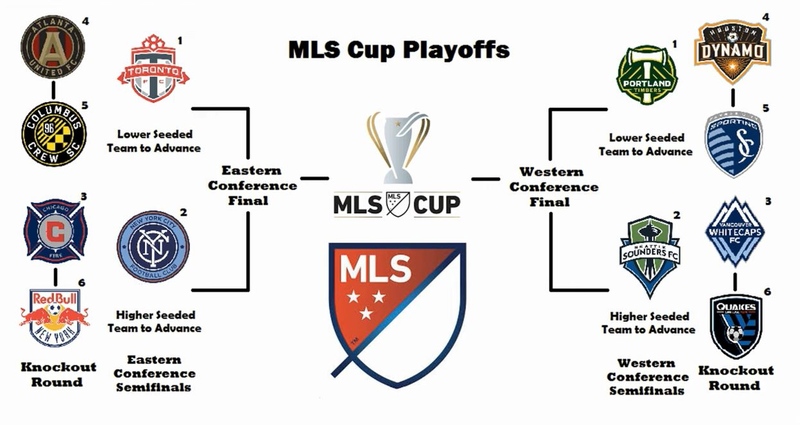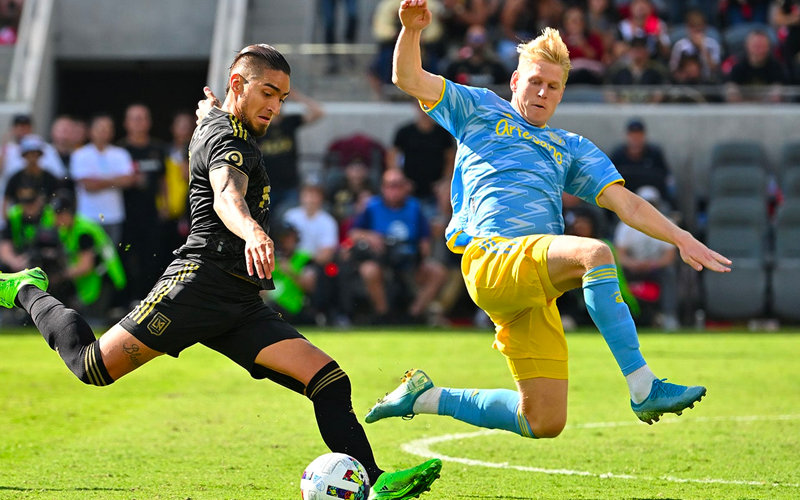MLS has seen some significant changes since its inception in 1996. One particular area that has undergone several changes is the league’s postseason format, but has it been for the better?
This article will explore the history of the MLS postseason, the current framework, and potential improvements that could enhance the competition and increase its appeal to fans.
Historical Roots of the MLS Postseason
Early Years: 1996-1999
In its inaugural season, MLS adopted a unique postseason format that featured three rounds: Conference Semifinals, Conference Finals, and the MLS Cup Final. The top four teams from each conference qualified for the playoffs, with the first seed facing the fourth seed and the second seed facing the third seed in a best-of-three series.
The winners advanced to the Conference Finals, which was also a best-of-three series, and the victors moved on to the single-match MLS Cup Final to crown the league champion.
This format remained unchanged for the first four seasons of the league’s existence. However, concerns over the long postseason and the frequency of matches led to changes in the structure.
2000-2002: The Introduction of Aggregate Goals
In 2000, MLS adjusted its postseason format by changing the Conference Semifinals and Conference Finals to a two-leg, aggregate-goal series. The team with the most goals after both legs advanced to the next round.
If the aggregate score was tied, a 20-minute, golden goal (sudden death) overtime period followed the second leg. If still tied after overtime, the match would be decided by a penalty shootout.
This format remained in place for three seasons until 2003, when the league decided to make additional changes to the playoff structure.
2003-2006: Seeding Changes and Introducing the Wild Card
In 2003, MLS introduced the concept of the wild card, allowing more teams to qualify for the playoffs. The top four teams in each conference automatically qualified, while the next four teams with the highest point totals, regardless of conference, earned wild card berths.
The first round of playoffs, now called the Conference Quarterfinals, featured a two-leg, aggregate-goal format, while the Conference Semifinals and MLS Cup Final remained single-elimination matches.
This format stayed in place for four seasons until the league’s expansion in 2007 prompted another change in the playoff structure.
2007-2010: Expanding the Playoff Field
With the addition of Toronto FC in 2007, MLS expanded the playoff field to eight teams, with the top two teams from each conference earning automatic berths, and the remaining four spots going to the next highest point earners, irrespective of conference.
The format remained largely the same, with the Conference Semifinals and Conference Finals continuing as two-leg, aggregate-goal series, followed by the single-match MLS Cup Final.
2011-2018: Conference-Based Playoffs and the Knockout Round

In 2011, MLS made significant changes to the playoff format by shifting to a conference-based system. The league expanded the playoff field to 10 teams, with the top three teams from each conference earning automatic berths, and the next four teams with the highest point totals qualifying as wild cards.
The playoffs now consisted of four rounds: the Knockout Round, Conference Semifinals, Conference Finals, and MLS Cup Final. The Knockout Round was a single-elimination match between the fourth- and fifth-seeded teams in each conference, with the winner advancing to the Conference Semifinals. The Conference Semifinals and Conference Finals remained two-leg, aggregate-goal series, while the MLS Cup Final was a single-elimination match.
In 2015, MLS expanded to 12 playoff teams, with the top six teams in each conference qualifying. The Knockout Round featured the third- through sixth-seeded teams, with the winners advancing to the Conference Semifinals to face the top two seeds. This format remained in place until 2018.
2019-2022: Single-Elimination and New Playoff Format
In 2019, MLS introduced a new playoff format that prioritized single-elimination matches to increase excitement and reduce the length of the postseason.
The playoff field expanded to 14 teams, with the top seven teams in each conference qualifying. The first round featured the second- through seventh-seeded teams in a single-elimination match, with the top seed in each conference earning a bye to the Conference Semifinals.
The Conference Semifinals, Conference Finals, and MLS Cup Final were also single-elimination matches.
2023-Present

From 2023, it was the top 9 teams in each conference that qualified for the playoffs in some way or other.
The top 7 teams earn a place in the first round, with the teams places in 8th and 9th play each other in a wild card round to earn the right to go forward. They have to play the top ranked team in that round to go any further though, and while you may think that is distinctly unfair, in 2023, Sporting Kansas were the wild card team and knocked out St Louis in round one, who had finished first in their conference.
Round one is a best of three series, with the winners going forward the conference semi finals, then the conference finals, before finally, the remaining team from each conference face off in the MLS Cup. These are all knockout games.
This format has been in place since 2023, although judging by how frequently they change things, it might not be this way for long!
Present Framework of the MLS Postseason
The current MLS postseason format consists of five rounds:
- Wild Card Round: The 8th and 9th placed teams compete to earn the final place in the first round.
- First Round: The 1st – 7th placed teams in each conference (plus wild card winner) compete in a 3 game series. The 1st placed team plays the wild card winner, 2nd place plays 7th, and so on.
- Conference Semifinals: The round 1 winners face each other. All matches are single-elimination, with the higher seed hosting the match.
- Conference Finals: The winners of the Conference Semifinals compete in single-elimination matches to determine the conference champions, with the higher seed hosting the match.
- MLS Cup Final: The two conference champions face each other in a single-elimination match to determine the league champion. The team with the better regular-season record hosts the match.
Possible Enhancements to the MLS Postseason
While the current MLS postseason format has generated greater excitement and more intense competition, there are potential improvements that could further enhance the playoffs:
Implement a Two-Legged Conference Final
Reintroducing a two-leg, aggregate-goal series for the Conference Finals could add drama and give lower-seeded teams a better chance at reaching the MLS Cup Final. This format would allow for home-and-away matches, giving both teams an opportunity to leverage their home-field advantage.
Introduce a Group Stage
Adopting a group stage format similar to the FIFA World Cup or UEFA Champions League could provide additional matches and excitement for fans. This format could replace the First Round and Conference Semifinals, with the top two teams from each group advancing to the Conference Finals.
Increase the Number of Playoff Teams
Expanding the playoff field to include more teams could create additional opportunities for underdog stories and late-season drama. As the league continues to grow and add more teams, increasing the number of playoff spots could help maintain a competitive balance and give more clubs a chance to compete for the MLS Cup. They would have to be careful here though, or the post season would go on for almost as long as the regular season.
Adjust the Seeding Process
Re-evaluating the seeding process could help ensure that the most deserving teams earn a higher seed and home-field advantage throughout the playoffs. For example, the league could consider adopting a system that places a greater emphasis on a team’s overall record or point total rather than their conference standing.

